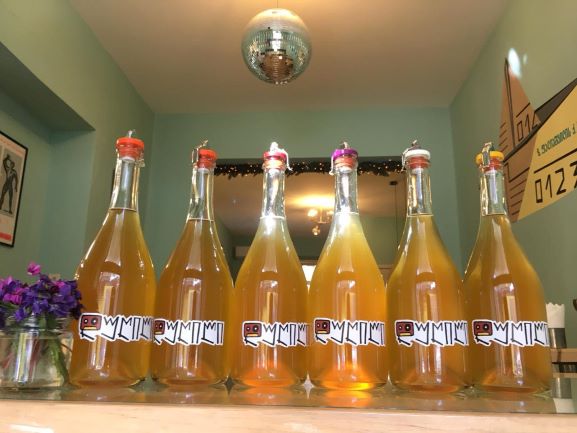Cider, or hard cider, made from apples is a relatively new drink in Georgia compared to Western Europe or the United States and has only started gaining popularity. Georgian cider producers, of which there are only a few so far, are confident that “Made in Georgia” cider has very good prospects both in domestic and export markets. They make their cider by fermenting apples in qvevri, or kvevri, which are clay vessels traditionally used for centuries in Georgia to make and store grape wine. They use both qvevri and regular cistern tanks in the production of their cider along with some apple varieties endemic for Georgia as their raw materials.
Dugili LLC is one of the first producers of cider from apples in Georgia. The co-founder of the company, George Cheishvili, who has an educational background in business marketing, has been promoting cider as a drink and specifically Georgian cider in the country for several years now. This year, he intends to establish a national association for fruit and berry wine producers (in addition to grapes). EastFruit asked Georgy Cheishvili about his company, the technology used to produce cider, peculiarities of the Georgian market, challenges facing producers, and reasons for their optimism.
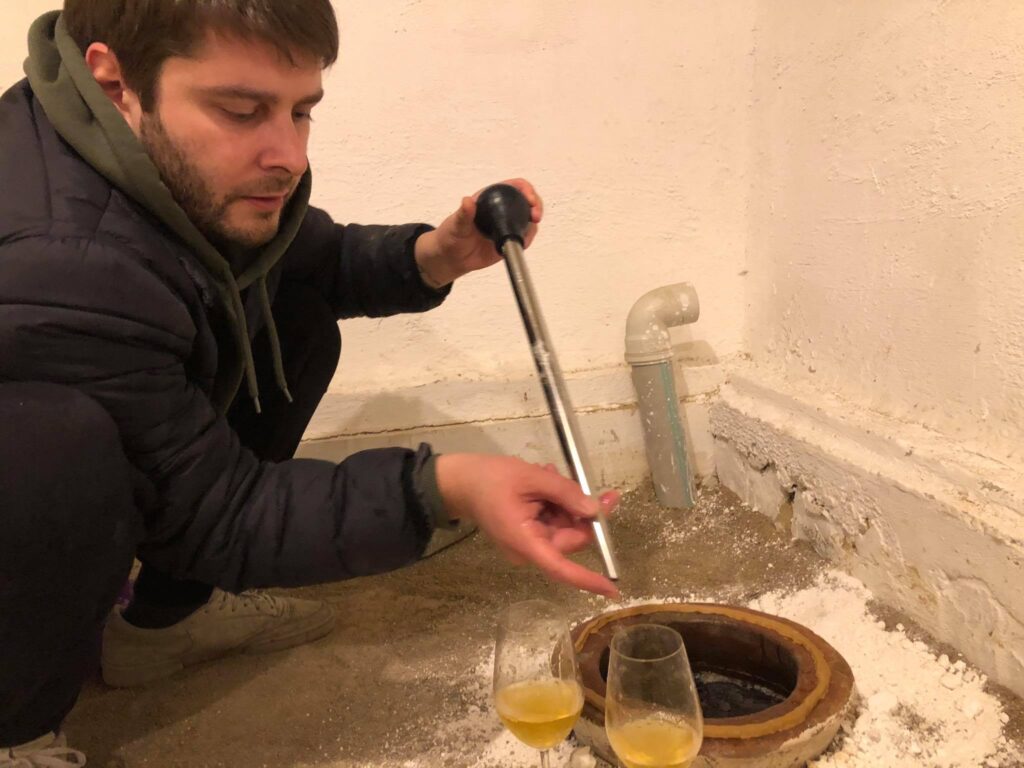
– Tell us how you make cider and what are its distinctive features.
 We make two types of apple cider. One type is made by fermenting apples in qvevri, which is similar to the production of Georgian wine, and the other type is made in tanks using European technology. Qvevri gives the drink a special taste and produces more tannin and higher alcohol content. For both types, we use several recipes. The main one is cider made exclusively from apples. Several apple varieties are selected and passed through a grinding apparatus to make the puree. The puree is then placed under a hydraulic press to obtain the apples’ juice, which is then fermented. We do not use yeast or sugar. If we want to get a sweeter drink, we add organic honey to the juice before fermentation at a ratio of 80 to 20. Also, if we want to infuse a berry flavour, then we add a little juice from raspberries, strawberries, blackberries, or other seasonal berries before fermentation.
We make two types of apple cider. One type is made by fermenting apples in qvevri, which is similar to the production of Georgian wine, and the other type is made in tanks using European technology. Qvevri gives the drink a special taste and produces more tannin and higher alcohol content. For both types, we use several recipes. The main one is cider made exclusively from apples. Several apple varieties are selected and passed through a grinding apparatus to make the puree. The puree is then placed under a hydraulic press to obtain the apples’ juice, which is then fermented. We do not use yeast or sugar. If we want to get a sweeter drink, we add organic honey to the juice before fermentation at a ratio of 80 to 20. Also, if we want to infuse a berry flavour, then we add a little juice from raspberries, strawberries, blackberries, or other seasonal berries before fermentation.
In the UK, they believe cider should contain at least 80% apples, but the world standard is more like 40-50% on average. Also, the world standard for cider is 4.5-5% alcohol by volume (ABV). The cider we produce contains 3-11% ABV depending on the raw materials and fermentation process and each is intended for different categories of consumers. It takes 1-6 months to produce cider depending on the technology and the season.
In addition to the standard cider apples used as raw materials, we also use Georgian apple varieties Iveria, Kehura, Khazarula, and several others that we bring from the Racha region of Georgia. We buy apples exclusively from local farmers. Our company has two locations within Tbilisi. In parallel with production, I also experiment with other varieties and I already have some good options.
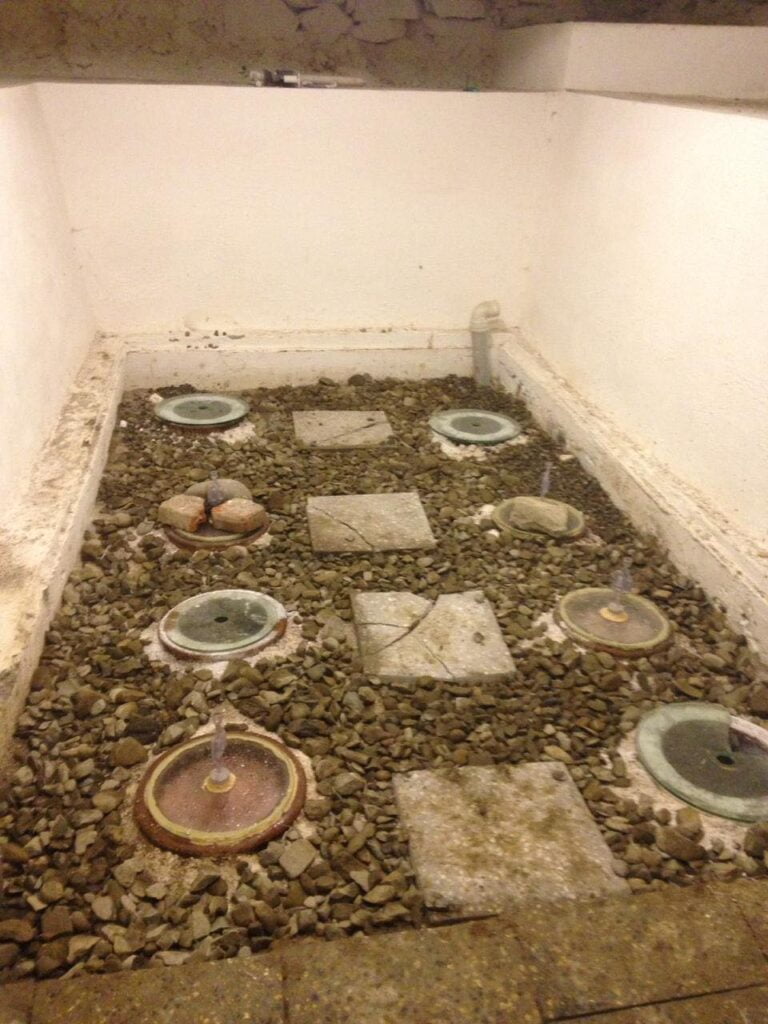
– How did you decide to start producing cider in Georgia?
The first time I tried making cider was during one of my trips to Western Europe. Since then, I drink cider exclusively instead of beer. I liked this drink so much that I decided to start importing it, especially since I have many friends who also like it. After comprehensively studying cider, I decided to make it myself. For 3 years, I have been engaged in its production and now together with partners. In the first year, I experimented making small volumes and supplied samples to bars and restaurants owned by my friends. Their demand exceeded my expectations. As a result, I increased production volumes, expanded the range, and began to supply products to other HoReCa facilities. Last year, we bought twice as many apples as in the previous year of up to 5 tons. From 1 kg of apples, depending on the variety, 300-600 grams of juice is obtained. The 2020 cider will be ready by March. I plan to continue developing in this direction because I am sure that the production of cider in Georgia is a very promising business.
– During the pandemic, the HoReCa sector in Georgia practically ceased to function. What channels do you use now to sell your cider and what makes you optimistic about the development of this business?
Now we sell our products mainly through online sales while we wait for the markets to reopen. Cider is not a perishable product so we are in no hurry. Already, about a dozen bars have informed us that they intend to start purchasing our products with the resumption of work.
In addition, I am actively engaged in the promotion of cider in Georgia and I run the Georgian Cider website and Facebook page. Here, I collect and publish information on cider, technologies, various studies, and legislative regulations on the market, etc., which may be of interest to all participants in the sector since this is an international practice. On my initiative, several local cider producers and other stakeholders have come together in a community in which we help each other in the production and sale of products. Foreign representatives of the sector also communicate with us. Last year, my partners and I wanted to establish the Association of Fermented Fruit and Berry Wine Producers, but the pandemic prevented us. Hopefully this year we can do it. June 3rd is World Cider Day and we want to organize a festival on this day (if events can be held). Before the start of the pandemic, I managed to make several presentations regarding cider and about 90% of the participants tried this drink for the first time. Almost all of them liked it. I am sure that Georgian cider will eventually be able to occupy its niche on the international market. All over the world, there is now a tendency to search for unique technologies and cider from Georgia is unique due to the country’s endemic varieties of apples and the technology using qvevri.
– How does the Association plan to contribute to the development of the sector?
We want to unite producers, including small ones, to develop better together. The global trend for the production and consumption of cider is growing. If we talk about this industry in Georgia, currently there are only a few official cider producers on the market. Yet, there are many making it at home and want to start this business. The association can share knowledge and experience with them.
Today, there are good prerequisites for the development of cider production in Georgia. Apples account for almost half of all fruits produced in the country. There are a lot of 30- to 40-year-old orchards and their apples not uniform or correct in shape, which does not contribute to fresh sales but they are absolutely acceptable in the production of cider. In addition, it is possible to obtain state support for the creation of enterprises for the production of cider and other fruit wines. For example, the “Made in Georgia” program made it possible to receive a grant in the amount of 30,000 lari and I know three entrepreneurs who entered the second selection round last autumn.
Apples are included by our authorities in the list of products with export potential. This means not only fresh fruits but also for processing. Hence, this can include cider, vinegar (made from cider and not from the apple itself) that is well-appreciated on the international market, and a strong alcoholic drink called Calvados. I’d like to point out that cider, like other fruit and berry wines, is a good addition for traditional winemakers. Establishing cider production will help them diversify their products and load production facilities not only when the grapes are being harvested. They will be able to offer a wider assortment to exporters, which increases the export potential, according to many experts.
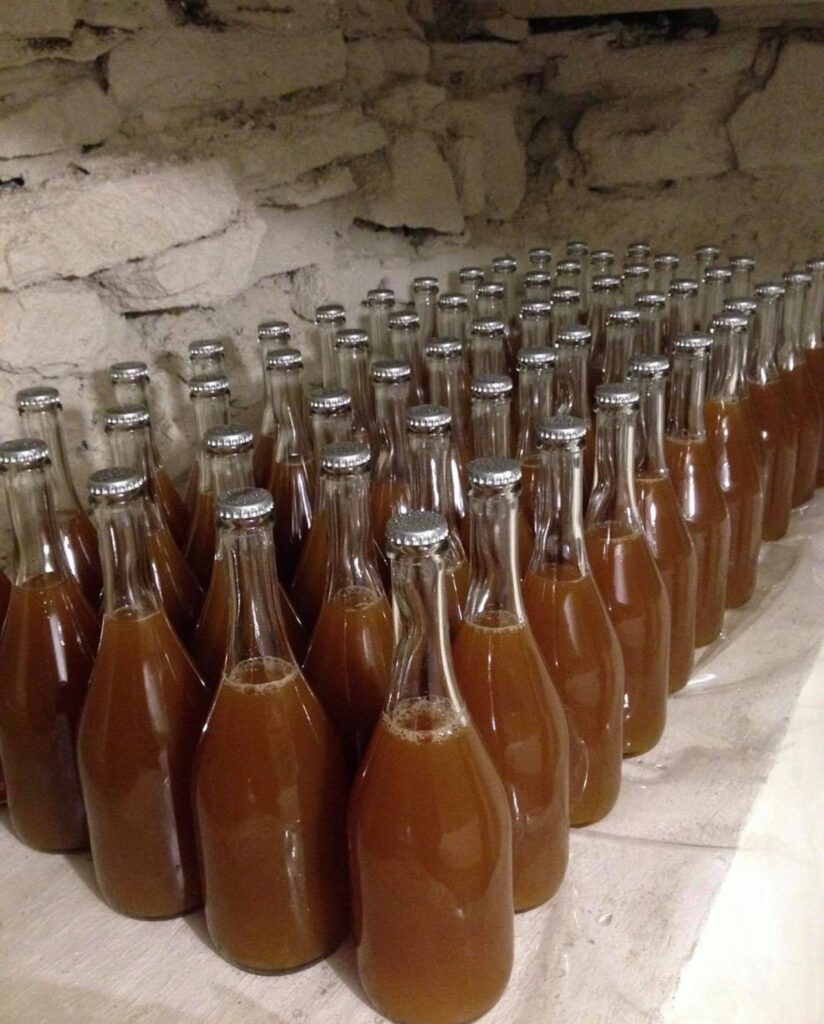
In my opinion, it will be easier for the Association to settle problematic issues with government agencies than for individual entrepreneurs. One of the problems that local cider producers are currently working on is high excise rates. In Georgia, local organic grape wine is generally exempt from excise tax, but for beer, it is 0.12 lari ($0.04) per 1 litre. In the case of other fermented drinks like apple, pear, and honey wines, it is much higher. For drinks with 5% ABV or less, the excise rate is set at 0.6 lari ($0.18) and for stronger than 5% ABV at 5 lari ($1.51) per 1 litre. This excise tax significantly increases the cost of production. Last year, I made a proposal to the Ministry of Agriculture to help reduce excise rates on cider, but so far the situation remains the same.
I also came up with the idea of adopting a practice found in British Yorkshire where there are also many apple orchards. There, authorities created a program in which a mobile, vehicle-mounted mini-factory for pressing apples to extract its juice drives up to a farmer’s orchard, which the farmers then use the juice to produce cider and other products. It would be great if a mobile mini-factory would drive around the Shida Kartli region, which is the main production region of Georgian apples.
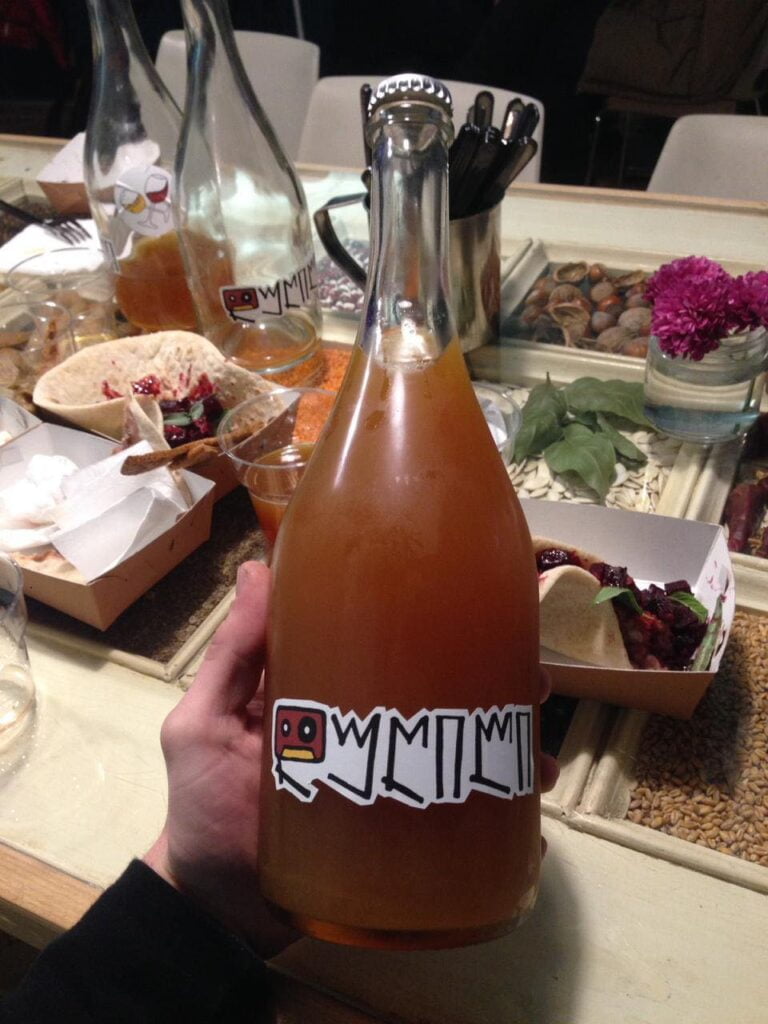
– Who are the main consumers of cider in Georgia now and what are the prices?
I can only talk about Georgian cider as imported products are presented in our market, but I am not familiar with the statistics of its consumption. Based on the experience for me and my partners, the main consumers of Georgian cider are still foreigners, but there is a growing trend among Georgians as well. I do not consider cider as an alternative to grape wine. Wine is still the traditional drink at a Georgian feast and I myself love it. Yet, there is a situation when you want to drink something lighter, fizzy, and a different taste. It could be beer, cider, or some other wine, each of which has its own time and place of consumption and its own niche.
I would like to note that the Georgian cider market has already divided in half: one part is occupied by a drink produced according to European technology and the second using qvevri. Both types of cider have their own fan base. The price is also different; qvevri cider is more expensive. Our company sells cider made according to European technology in bottles of 0.33 litres at a price of 5 lari ($1.51). For cider fermented in qvevri, we bottle stronger cider similar to grape wine in 0.7-litre bottles at a cost of 15-20 lari ($4.53-$6.04).
– Tell us in more detail about your plans for the development of production in the near future.
We recently received a grant from the Farmers Association, which helped us to purchase additional equipment made in Italy. This year, we plan to purchase more tanks and qvevri. We also want to start branding our products. I think qvevri cider and cistern tank cider will be presented under two separate brands. After the brands become recognizable in the Georgian market, we will start promoting them to foreign ones, but this is a longer-term strategy. In addition to cider with apples, today we also produce perry, which is cider made from pears. We are thinking of gradually increasing production of perry as well as strawberry, blackberry, and honey wines. Before the start of the pandemic, we provided exporters from Japan, France, the Netherlands, the United States with samples of our cider and wine products. We asked for their opinion and the reviews were positive. They noted that the market is ready for such drinks, but the stability of supply is needed so we will take our time to work towards this.
The use of the site materials is free if there is a direct and open for search engines hyperlink to a specific publication of the East-Fruit.com website.




